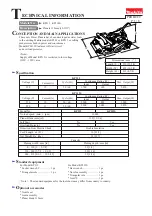
3 Detailed checklist
Checklist
Article ID: 109745536, V2.0, 05/2022
19
©
S
iem
e
n
s A
G
2
0
2
2
A
ll r
igh
ts
re
se
rv
e
d
Note
Configure the ring before it is physically closed. Otherwise, a loop will result and
interrupt communication.
All devices in a ring must support the ring protocol you are using; they must be
configured accordingly. Other devices, such as unmanaged switches, must not be
added to the ring. The rapid switchover of approx. 300 ms will not work with such
devices even if the structure at first appears capable of functioning.
Monitoring with MRP
Define a fixed MRP manager in order to monitor the state of the ring, e.g. via
SNMP or in the S7 CPU program. Set all other nodes in the ring to MRP clients.
If multiple MRP managers are present, it is unclear which is currently active.
Therefore, all devices must be contacted in order to find the current manager and
ascertain the state.
Note
You can find application examples on redundancy in Siemens Industry Online
Support (see \4\ in
chapter 4.3
3.11.2
Spanning tree
Menu path
You can find this information in the following paths:
•
With MSPS: "Layer 2 > Spanning Tree"
•
With X-300: "Switch > Configuration" and "Switch > STP/RSTP"
Recommendation
•
"Spanning Tree Protocol" ("STP") is enabled by default on some SCALANCE X
devices. Disable "Spanning Tree" if it is not being used.
•
If you are using "Spanning Tree", you should prefer to use "RSTP" (Rapid
Spanning Tree) thanks to its faster reconfiguration time. To keep the
reconfiguration time down, select a suitable position for the Root Bridge and
the path costs.
Note
SCALANCE X-200 and X-200 IRT devices do not support "Spanning Tree".
Note
You can find an application example on "RSTP" in Siemens Industry Online
Support (see \4\ in
chapter 4.3














































